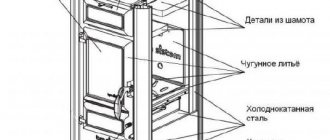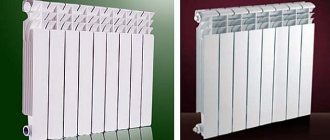How to shut off a heating riser
The heating riser belongs to common property.
It must be blocked by employees of the service organization who have the right to do so. If you follow the letter of the law, you must come to the DEZ, Housing Office, DEU, etc. write an application, pay for the service at the cashier. At a certain time (indicate in the application) a representative of the service organization must come and turn off the valve in the basement.
How much does it cost to turn off the heating riser? This is not an easy question. The fact is that there are no fixed prices. There is a price list for services, but it is only a recommendation. In reality, each organization sets its own prices. On average, you will have to pay from $15 to $20 for this operation.
The valve that shuts off the heating supply is located in the basement of the house
There is a workaround. Agree with neighbors and shut off the riser yourself without the campaign’s knowledge. But you know that this is not always possible: neighbors are different. If in the summer, when the heating is turned off, such actions may meet with understanding, then during the season - it is unlikely. There is another difficulty: the heating valve is not always easy to find. You either need to have a communication scheme, or just know where it is. They usually know a locksmith. But they won’t block the riser for free, and will require at least $10-15. There seem to be savings, but they are small. And if this fact becomes known to the management or operational company, you will face substantial fines.
Rules for carrying out work on replacing heating risers

In this case, it is allowed to replace the heating risers in the apartment with your own hands. If you have to change the valve itself, then permission from the Housing Office is required, which is issued on a paid basis. The most optimal solution when performing the above work is a one-time replacement of the heating riser with polypropylene on all floors at once (the entire span). But, in most cases, this wish cannot be realized. For some neighbors, the work is too expensive, others have already changed everything in their apartment, and others are quite satisfied with the condition that exists at the time you start the renovation work.
According to the existing rules for performing work, they must be carried out in the following sequence:
- The system is shut off and water is drained from it. This work must be performed by a housing mechanic. If the work is emergency, the riser will be closed free of charge. In all other cases, you will have to pay a state fee.
- A grinder is used to cut out old riser pipes in an apartment. In this case, the technology of subsequent work should be taken into account.
- If the riser is changed along the entire span, then the pipes are cut in such a way that they can be conveniently removed from the ceiling;
- The installation locations for new heating devices are being outlined.
- Radiators are installed in place and leveled. Otherwise, air will accumulate in them.
- After installation, pipes are connected to the radiator, going, respectively, to the upper and lower neighbors.
- A jumper is installed to block the area in the event of a leak.
- The riser starts.
When neighbors have prohibited them from performing any joining work, the pipes should be cut in such a way that the remaining part can be threaded (at least 6 turns) and a transition coupling can be installed.
If your neighbors have a metal riser and they allow you to connect to them, then it’s better to cut in right here, it’s easier to get through the ceiling.
If your neighbor has a riser made of plastic pipes, in this case you should also choose plastic pipes of the same diameter and connect to the neighbor through a special coupling. If you are planning a metal riser, then you will have to make a threaded fitting, fixing the position of the riser in the neighbor’s apartment. Otherwise, you can turn its riser and you will have to make repairs on it too.
Scheme for replacing risers in a house or apartment
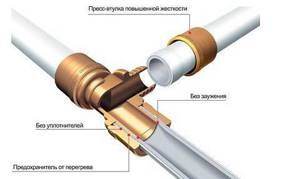
Replacing a cast-iron riser with a plastic one in a private house technically differs from similar work in an apartment only in that in the first case there is no possibility of obtaining a bunch of approvals and permits. Therefore, we consider this issue using the example of work in an apartment.
The work should be carried out according to the scheme described below:
- Submit an application for disconnection to the Criminal Code;
- Receive technical specifications indicating the technical parameters of those components of the new riser that you have the right to use, as well as the permitted wiring diagram;
- Purchase consumables, taking into account the above requirements;
- Agree on the time of work (start and end of shutdown).
- Shutdown;
- Perform the work (the tenant can replace the heating riser in the apartment with his own hands or involve third parties);
- Provide representatives of the management company with the opportunity to check the quality of work performed;
- Start the heating system.
In winter, it is legal to turn off the riser and carry out work such as replacing the heating riser with polypropylene, it is very difficult, because For the entire period of work, heating is turned off in all apartments. To avoid facing a large fine.
The heating system of high-rise buildings is a common riser from which coolant is supplied to each apartment.
But what to do if the riser in the house is working, but it’s cold in the apartment because the neighbors blocked it?
Who to entrust the work to?
Since you will still have to pay, it is better to do everything at once. In any case, with all the radiators on one riser. And here the question arises: who will carry out this work. To get started, you can go to the housing office or departmental office and ask about their prices. As a rule, the prices there are rather high, and the quality of work is not up to par. To make sure of this, you can ask neighbors who have already dealt with them.
You can find a private owner. Just not from advertisements, but from the recommendations of acquaintances, colleagues, friends. Their prices are rarely higher than those of operators. And the quality is better - this is their bread: if they do a bad job, there will be no customers. That’s why they try (if they are sane) to do everything conscientiously.

Choosing a performer is not an easy task
There is still an opportunity to negotiate with the housing office employee by bypassing the cash register. But here the option is controversial. Firstly, they tend to ask for a price based on the client’s wealth and it is far from a fact that they will demand less than the price list. More likely - more. Why, tell me, should they pay more for the same quality of work (it is unlikely that they will work more diligently than at their main job)?
Another option is to contact a specialized organization. And again, preferably based on recommendations. Although, organizations are forced to monitor the quality of work for prosaic reasons: they need clients. If they have a bad reputation, no one will go to them
Therefore, if you don’t know the organization, there are no recommendations, you can pay attention to the period of its existence on the market. If it’s not a year or two, then they definitely know how to do something, otherwise they wouldn’t have existed for so long
Naturally, pay attention to the services they provide. Many people suggest that issues with permission and disconnection of risers should be handled by the management or operating organization. You just specify the list of works and time. How expensive will it cost? In different ways: organizations, like their leaders, are different. It may be more expensive than the work of a mechanic from the housing office, but at least you will have someone to file a claim with in case of problems: you sign an agreement that will clearly outline who is doing what.
And the most economical option: do everything yourself, with your own hands. It’s not an easy task, but it’s not the gods who burn the pots. Just first you need to find out everything down to the smallest detail, purchase everything you need, prepare tools and equipment, and only after that write an application to turn off the riser.
This all concerned planned repairs or preventive maintenance. If a radiator or pipe is leaking, you definitely have to take action yourself. Read how to fix a radiator leak here.
Conducting a trial

A boy warms himself by an oil heater.
The interests of residents are represented in court by the chairman of the building council or an employee from the housing and communal services department. To draw up an application, if the neighbors do not know the full name of the culprit, you must contact the Unified State Register (knowing the address and paying a fee of 200 rubles). A lawyer is hired to conduct the case, whose services are paid for by the applicant.
To collect the evidence base, you will need to measure the temperature in the room, the owners of which are complaining that the heat supply has stopped.
If the temperature in the apartment meets the standards established by law, it will be more difficult to prove the shutdown.
In accordance with the standards, air temperature:
- In a living room in an area with the temperature of the coldest five-day period: +20°C, in a corner room +22°C;
- In other areas not lower than +18°C, in the corner room +20°C;
- Permissible excess – up to 4°C;
- The permissible decrease in the period from midnight to 5 am is up to 3°C;
- Decrease in the period from 5 am to midnight is not allowed by the standards.
Conclusion: at night the temperature should be above 15 degrees Celsius.
If the heating is turned off in only one room, it is usually sufficient to close the interior doors so that the heating from other rooms does not enter the room and the temperature can be measured.
Important! If the housing office or the chairman of the homeowners' association has not responded to the requests of the residents, they file an application with the court for the inaction of the housing and communal services structure in this matter and the failure to respect the rights of the residents to common property. If the process is successful, the applicant will be compensated for the costs of a lawyer.
How to shut off the battery
To perform some work, you only need to turn off the radiator:
If shut-off valves are installed - ball valves. This is easy to do: you need to turn the tap handle until it stops on the supply and return pipes. The coolant flow is blocked, the heater can be removed.
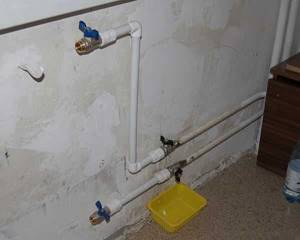
If there are ball valves in front of the radiator, close them and remove the radiator
Sometimes a manual control valve is installed at the supply. It can also shut off the coolant supply, but its main function is to regulate: it is installed to maintain a constant temperature in the room.
If the heating season is over, after closing the taps, you can safely remove the radiator. If there is a need to carry out work during the heating season, it is necessary to take into account the peculiarities of the installation. In a single-pipe system with vertical distribution, shutdown without stopping the system is possible only if there is a bypass.
A one-pipe system with vertical wiring looks like this: one pipe comes out of the ceiling, goes to the radiator, the second comes out of another hole in the battery and goes to the floor.
The bypass is a jumper placed in front of the radiator. It connects the supply and return pipes. It is usually carried out with a pipe size one step smaller than the diameter of the liner.
If there is a bypass, then when the radiator is turned off, the coolant continues to circulate through the riser, but already flows through this jumper. As a result, no one suffers: the neighbors are warm, you carry out the required work.
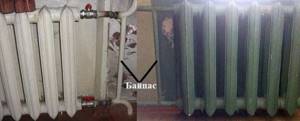
The bypass is a jumper in front of the battery. In the photo on the right, even though there is a bypass, there is nothing to shut off the battery: there are no ball valves
When connecting using a two-pipe scheme, there are no problems: there are taps, close them, remove the radiator. With a single-pipe system, but with horizontal wiring, jumpers are also needed. But, in their absence, you will freeze your apartment.
In general, a bypass is a very necessary element: if necessary, it allows you to install a thermostat (thermostat) at the inlet of the radiator, with which you can maintain a constant temperature in the room. Without this jumper, installation of control devices is prohibited. It’s just that without it, it turns out that you regulate not only the temperature of your battery, but also the entire riser, which is unlikely to please your neighbors.
But just the presence of a bypass does not guarantee the ability to turn off the battery during the heating season. There should also be ball valves on the supply and return. Moreover, it is better to take full-bore valves for heating radiators. There are also standard ones. In them, the clearance in the open position is approximately 70-80% of the diameter. In full bore models it is 100%. To ensure normal heat transfer, they are exactly what is needed.

The battery can be disconnected at any time if there are ball valves at its inlet and outlet. But to ensure that heat transfer does not decrease, it is necessary to install full-bore models
If there is no bypass, to carry out all this work you will have to turn off the riser, and this is not done soon, and even at a cost.
Bypass device and its functions
In winter, it is not allowed to close the common riser, with the exception of emergency situations. The presence of a bypass allows you to carry out repairs without turning off the heating system of your neighbors. The device is made of pipes with a smaller diameter than the supply and discharge lines. Two ball valves allow you to properly shut off the battery even if it’s hot, directing the water circulation through the bypass.
When replacing the radiator, the water is shut off, and after the work is completed, it opens again. If the room is hot, the bypass again allows you to temporarily shut down the system: hot water stops flowing into the battery and the room is cooled. But it is better to install thermostatic valves to regulate the temperature, maintaining a normal temperature in the room.
Using such a device, the radiator can be properly disconnected from the system at any time if it is necessary to perform painting, washing, replacing batteries, as well as when changing gaskets and nipples without blocking the risers.
Correct Bypass Installation
The bypass functions, depending on the type of heating system, are as follows:
- Energy carrier adjustment. When the room temperature is higher than normal, the thermostat reduces the supply of hot water, which negatively affects the operation of the entire system. This device is used to return coolant that did not enter the battery into the system.
- Emergency adjustment of coolant circulation in a system with an electric pump. When a power failure occurs, a bypass with a valve closes the hot water supply tap to the pump through the bypass pipe, at which time the valve opens and the coolant is directed through the central pipe. In this simple way, the system goes into a state of natural circulation without the participation of a pump.
- Reanimation of a single-pipe system. It works quite effectively: apartments are warm, even hot. The bypass also helps out in this situation, allowing you to reduce the supply of hot water, thus acting as a thermostat.
Thermostat on the radiator
The bypass must be installed next to the radiator. It is recommended to make the bypass pipe directly on site during installation using a welding machine. You can also use ready-made equipment on threaded connections. The control valve or radiator thermostat must be located between the radiator inlet and the bypass.
The supply side is equipped with a valve with a thermal head.
How to protect yourself from water outages
Everything is much simpler when it comes to a private house with a well in the yard. In such a situation, the problem actually exhausts itself. For convenience, you can additionally install a pump that would supply water from a pump or well to the general system of the house. It is more difficult to form a water supply in an apartment or in a private house located in regions where it is not so easy to get to groundwater or its quality leaves much to be desired. A solution to the problem can be a large water storage tank, which is regularly replenished while when water is supplied normally. With proper installation and connection, water from the reserve tank can be directed to the apartment’s water supply system without loss of pressure, which will allow, for example, the unhindered use of a gas water heater or electric boiler. From such an option as installing a pump that would pump up the remaining water in the public water supply system, It's better to refuse. Firstly, you may not be the only smart guy in the area, then the water simply won’t last long. Secondly, most likely, air pockets will form in the pipes, which will subsequently cause a water hammer effect when the water supply is turned on, and this can lead to major breakdowns. Again, the water utility can fine you for this.
How to turn on the radiator correctly for the first time
A very important point is to turn on the central heating battery for the first time in your home. When a long period of time has passed, and the thermal power plant begins to supply water to our batteries, then usually the first water flowing through the heating systems is the dirtiest and rustiest. Imagine. You have just installed a brand new battery, one might say, off the assembly line, and suddenly a powerful stream of dirt is thrown in there. It is not surprising that many batteries become clogged precisely from the first such inclusion, and then we are surprised that out of 12 battery bends, only 8 are heated, the rest remain cold. To prevent this from happening, a jumper (bypass) is needed when installing the battery. If you have done the installation correctly, then set the position of the ball valves as shown in the figure:
In this case, the entire flow of dirt when turned on for the first time will go through the jumper, keeping your battery intact and safe. In this option, it is better to keep hot water running for several days. Of course, many are looking forward to when it will be turned on. However, my advice is, if you can’t wait a few days, wait at least one day. By the way, a detailed article on how to turn off the battery.
Is it possible to turn off the radiator in the summer?
All operating organizations state that they do not drain the system in the summer, but “drive” cold coolant. In reality, the system is drained: for repairs, replacement of pipes or equipment, etc. And although all radiator manufacturers say that it can stand without water for two weeks (or a week) a year, no one guarantees that the system will be filled in two weeks. This situation is not critical for copper and copper-aluminum radiators - copper generally has oxygen or not - it practically does not react to its presence in any way (after an oxide film has formed on the surface).
To avoid damage to radiators, many people close the radiators with ball valves after the end of the season. But you can’t do this: the battery can simply rupture.

If you turn off the radiator in the summer and do not open the air vent, the battery may simply rupture
The fact is that in the presence of water in the radiator, chemical processes occur, which are accompanied by the release of gases. When the taps are closed, the possibility of their exit is cut off. Gases accumulate more and more inside, creating excess pressure. Once it exceeds its tensile strength, the battery will burst. And this will not be a warranty case: the operating conditions have been violated.
This problem is relevant for aluminum ones. cast iron, bimetallic and steel radiators. That is, for everyone. But what to do? It’s both bad and bad. And the solution is this: shut off the battery, but at the same time open the air vent.

If you turn off the radiator for the summer, make sure that the air vents are open and in working order.
Today, every modern radiator has this device. Most often - the Mayevsky crane. This is a small washer with a hole, with the help of which it is necessary to bleed air after starting the system and during the heating season. In manual models, you need to use a wrench or a screwdriver to turn the screw counterclockwise. In automatic ones, bleeding occurs as air appears. But even here there is a screw cap that blocks the exit of gases. So here it is. If you decide to shut off the battery for the summer, make sure that the air vents are open and the air is released (not clogged). It also doesn’t hurt to make sure at least once a month that the air vent is still open, otherwise you never know: the children were playing, or someone absent-mindedly twisted it...
Battery adjustment process
Often, at the beginning of construction, the heating system is adjusted by simply routing pipes of various thicknesses from the boiler to the radiators. However, this approach is not enough to effectively control the heating system.
Even if the boiler is programmed to a certain temperature, the radiators may be colder than required. This occurs because there is a large amount of air in the pipes. By lowering it, water can flow more freely through the pipes. Consequently, the room will begin to warm up more quickly and with increased efficiency. Therefore, when adjusting the batteries, you should first bleed the air from the radiators. (See also: Piping heating radiators)
Directly for these purposes, absolutely on one side of each battery there is a special tap, by turning which you can release unnecessary air. However, be careful when opening it slowly to avoid a sudden release of hot steam, as it is under high pressure.
To properly regulate heating batteries, just opening and closing the special control valve on the battery is, of course, not enough. Depending on how many batteries are connected to the boiler, open them a certain number of turns. For example, you have three radiators connected to a boiler. To ensure that the pressure is evenly distributed throughout the heating system, open the first radiator a couple of turns, the second by three, and the third by four. This adjustment of the heating radiators in the apartment will allow you to heat the premises in a shorter time.
If your system has a forced water pumping function, it becomes possible to install so-called three-way valves on each radiator. If the boiler has sufficient power, adjusting the temperature of the heating battery will not be difficult. In general, to simplify the process of setting the required temperature, each radiator must have special valves. (See also: Connection diagram for heating batteries)
Their presence will allow you to control the flow of heat and rational consumption of heating equipment. For example, if the room has become too hot, or it is not in use and is closed, then the flow of hot water into the radiator can be reduced or completely shut off using such a tap.
Lessons on bathroom and toilet renovation
Lesson 1. Planning a bathroom and toilet renovation with your own hands Lesson 2. Where to start a bathroom renovation. Start of dismantling work Lesson 3. How to remove old paint from walls in a bathroom and toilet Lesson 4. How to remove a concrete threshold in a bathroom and toilet Lesson 5. How to prepare a ceiling in a bathroom for painting or a suspended ceiling Lesson 6. Is it necessary to replace water supply risers Lesson 7. How to cover water supply risers in an apartmentLesson 8. Which pipes are best for water supply in an apartmentLesson 9. Do-it-yourself plumbingLesson 10. How to hang a heated towel rail in the bathroomLesson 11. Which water meter is best for an apartmentLesson 12. Do-it-yourself electrical wiring in the bathroomLesson 13. Leveling the walls and floor in the bathroomLesson 14 Wallpaper for the bathroom, kitchen, toilet Lesson 15. Which tile to choose for the bathroom Lesson 16. Notched trowel - a miracle of human invention Lesson 17. Materials and tools for laying tiles Lesson 18. How to lay tiles on the floor with your own hands Lesson 19. How to cut tiles and what to use when tiling Lesson 20 How to drill tiles and what to do when tiling Lesson 21. How to lay tiles on a wall Lesson 22. Which bath to choose for your home Lesson 23. How to install a cast iron bathtub Lesson 24. How to install an acrylic bathtub Lesson 25. Laying tiles on a bathroom wall with your own hands Lesson 26. How to lay tiles on the outer corner of the bathroom Lesson 27. Sparks from an angle grinder can kill your tiles Lesson 28. How to replace tiles on the floor or wall Lesson 29. How to choose a faucet Lesson 30. How to change a faucet with your own hands Lesson 31. How to install a ventilation grill in the bathroom Lesson 32. How to choose a door for the bathroomLesson 33. Grate for the bathLesson 34. How to install a toilet with your own handsLesson 35. What to do if the water pressure in the apartment has weakenedLesson 36. What to do if the sink is cloggedLesson 37. How to clean the sink or bathtub with new products from Domochist
>Tip 1: How to turn off the water in one apartment
How to choose and independently change the heating riser in an apartment
There are no eternal communications; the service life of heating risers is also exhausted. To replace them, you need to find out what they are, how and what they are used for. New materials are constantly appearing on the construction market - easier to install, wear-resistant and reliable. How to choose the right one and replace the heating riser yourself?
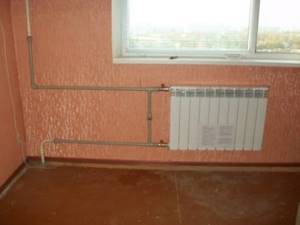
What is a heating riser
A heating riser is a pipeline that connects the elements of the system and ensures normal circulation of coolant in heating devices. Risers can be supply or return. The former dilute the coolant into the radiators, and the latter collect and remove the cooled liquid. In a one-pipe system, one heat pipe performs both functions.
The coolant can move in two directions: from bottom to top and from top to bottom. In centralized heating systems, special compensators are installed on the main risers. To urgently stop the heating system, shut-off valves are installed.
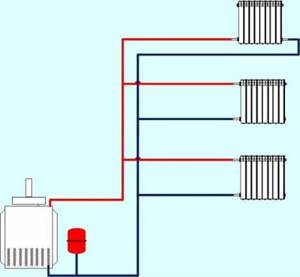
What are pipes made of?
Pipes used in heating systems must withstand high temperatures and severe pressure surges. Several types of materials meet these requirements:
- steel;
- copper;
- metal-plastic;
- polypropylene;
- cross-linked polyethylene.
Each of the materials has its own advantages and disadvantages. Steel is durable, can withstand a coolant temperature of 95 degrees, but is expensive, wears out quickly, and is difficult to install. Copper is very expensive, but it lasts for several decades and is highly resistant to all negative influences.
When installing modern heating systems, metal pipes are used less and less. They were replaced by metal-plastic, polypropylene, and polyethylene. Synthetic materials are resistant to high temperatures, pressure and corrosion, have high thermal conductivity, and are well suited for hidden installation.
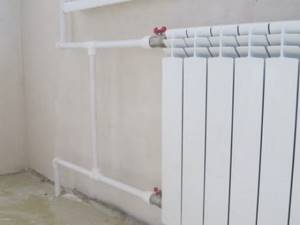
Cross-linked polyethylene is a new promising material on the construction market
Products made from cross-linked polyethylene attract special attention from buyers. This is an innovative material with which you can install an almost eternal heating system. It is not afraid of corrosion, pressure, or high temperatures. Pipes made from it are thin and light, but at the same time very durable.
The main advantage of cross-linked polyethylene is its high ductility: it can withstand high loads and quickly takes its original shape. Thanks to this property, pipes do not flow at the joints, which makes the material ideal for hidden installation. The only drawback is the high cost of the material itself, connecting elements and tools for installation.

Features of placing risers in rooms
Heating risers are located near the external walls. If the room is corner, then it is better to place the riser in the corner to protect the walls from cooling and becoming damp. It is taken into account that the riser:
- They are installed simultaneously with heating devices or after their installation.
- Do not place near flammable materials. At a coolant temperature of 105 degrees, the distance to such materials should be at least 10 cm.
- In single-pipe systems, the riser is placed 15 cm from the window opening with connections about 40 cm long.
- If the distance to the heating device is less than half a meter, then it is not necessary to make a slope, but if it is greater, then the slope is 5-10 mm towards the battery.
- In houses with several floors, fastenings depend on the height of the floors. At a height of less than 3 m, no fastenings are installed. If the height is greater, then the fastenings are mounted at half the height of the floor.

How to change a heating riser with your own hands
Most often, polypropylene is chosen for modern heating systems. It is affordable, looks nice and has good technical and operational characteristics. For the owner of an apartment in a multi-storey building, the ideal option is if the neighbor above has already changed the heating pipes to polypropylene ones. If not, you will have to negotiate with him to connect the riser. If no one lives in the apartment, you will not be able to start the heating system after replacing the pipe.
How to turn off the heating riser before replacing
If the coolant rises from below in the system, the risers are connected in pairs. To figure out which neighbor's riser yours is connected to, go up to the neighboring apartment and look at how the jumpers are placed. If the coolant supply comes from above, then to turn it off you will have to close two valves - in the attic and in the basement.
To find the right valve, it is important to correctly identify the entrance, after which the location of the required one will become obvious. After closing the valve, you need to unscrew the plugs, open the vents and wait for the water to drain from the system.
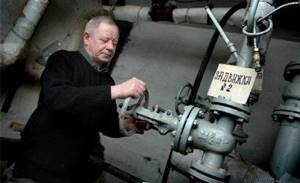
Replacing metal with polypropylene
If the neighbor has already changed the pipes, then no problems will arise at all. Buy pipes of the same diameter. Cut off the old riser, insert a new pipe into the ceiling and connect to the pipe of the neighboring apartment through an adapter coupling. Next, remove the foil layer from the pipe. Unscrew the old pipe from the radiator and install the faucet. A transition coupling is installed in it and connected to the riser.
If your upstairs neighbor has old pipes, agree to install a coupling in his apartment. If you can’t find a common language, you will have to cut off the pipe under the ceiling, leaving room for cutting 5-6 turns of thread. The rest of the work is the same as when connecting to polypropylene pipes.

Replacing heating risers in an apartment is not particularly difficult. It is best to change them all at the entrance and contact specialists who can carry out high-quality installation. It will be much cheaper and easier, because all neighbors will know in advance when installation work will be carried out in their apartments. This way you can avoid many difficulties and mutual claims.
Video: replacing heating risers in a high-rise building
How to shut off the heating riser and start it after repair
Bottom filling
Having completed this work, you can close the discharges and very slowly fill the system with water. The slowness of this process is due to the fact that when the system is quickly filled, a water hammer can occur. If there are screw valves, the water must move in the direction indicated by the arrow on the body - otherwise the valve may break, after which you will have to reset the heating system in the entire house.
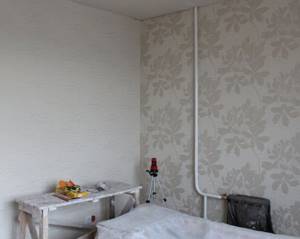
Then you can open the valves completely and relieve the air pressure on the upper floor. The Mayevsky valve is usually located in the radiator plug or in the upper part of the jumper. Resetting and starting will be greatly simplified if all valves installed in the system are ball valves.
Top filling
Having completed the work, you can close the discharge and very slowly fill the riser. It is imperative to observe the direction of water movement. Now you can open both valves. There is no need to bleed the air: it will move itself into the attic expansion tank.
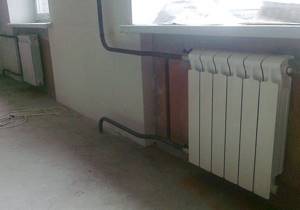
What needs to be done before turning off the riser
In most cases, the heating system is repaired in the summer. However, in winter, the management company is also obliged to carry out the necessary work to eliminate heating problems. Especially if the residents of the house indicate problems in their application. The algorithm by which the riser is turned off is as follows:
1) First you need to write a corresponding application.
2) Purchasing the necessary material for repair work.
3) Coordination of repair time with the management company.

How to shut off water supply risers for hot and cold water
If you don’t know in principle how to turn off the water in an apartment, be sure to read the article to the end. So, water comes to our apartment through water risers. Riser pipes are long pipes that usually run from the floor to the ceiling. If you live on the top floor, the configuration may be different. In many apartments of the “Khrushchev” and “Brezhnevka” type, risers are located in the toilet. However, in some old houses, in addition to the toilet, they can also be found in the kitchen.
The main purpose of risers is to supply hot and cold water to the apartment. If the house does not have a gas water heater, then as a rule you have 2 risers: for cold and hot water. If the house has a gas water heater, then there is only one riser - with cold water.
For safety reasons, it is very important that there are reliable valves at the entrance to the apartment with the help of which you can easily turn off the water at any time and turn it on again. The optimal choice in this case are ball valves
On the pipes they look like this:
The optimal choice in this case are ball valves. On the pipes they look like this:
Their reliability has been tested by time. In apartments, ball valves of sizes 1/2 inch, 3/4 inch, 1 inch are usually used. It just so happened that they are measured not in millimeters, but in inches. Hence the conversations of plumbers: “I gave you half an inch.” Or “Let’s put it at three-quarters.”
If instead of ball valves you have something unclear: something very old, difficult to turn by hand, or, even worse, leaking, my advice to you is to change it urgently! When water suddenly starts pouring out of these taps, it will be a disaster! After all, there will be nothing to stop this water! You will flood yourself and all your neighbors below. Don’t think that the emergency service will save you, they simply won’t have time. If there is a fountain, then in half an hour you will flood the whole house and have problems for the rest of your life! Therefore, in a new apartment, before you get ready to glue wallpaper, level the walls, whitewash the ceilings, check the inlet water valves and install good, proven ones.
In this catalog you will find high-quality ball valves: Valtec, Bugatti, etc.
My personal experience is only Italian or German ball valves! They are more expensive. Never skimp on plumbing components. (About sad experience). If the funds are really bad, it’s better to install a simpler toilet, sink or bathtub. But all the parts that connect the pipes must be of excellent quality! Follow this rule throughout your life. By the way, I talk about pipes in great detail in this article.
Entrust the installation of ball valves to a master plumber. But first, read my article Choosing a Master so that a professional can really come to you. What diameter to install a faucet is a very individual topic; the master himself will advise you. But you must ensure that the apartment has good water pressure, both hot and cold. Also tell the technician to use only high-quality parts!
By reading my blog, you are probably making repairs. Bookmark this page. This is where all the useful home improvement stores are located.
I’ll tell you a secret that a real professional will evaluate your requirements, although he will warn you that it will be more expensive. The fact is that it is much easier for the master himself to work with high-quality material, since the reliability of his work increases significantly. Both you and him will be much calmer that you took this topic seriously.
And now, a few parting words. When you have installed ball valves and turned on the water, do not forget to turn off the risers once every 3 months, and then turn them on, i.e. simply close each of the valves:
and then open again:
This is important so that the taps do not stagnate in one position! You need to periodically monitor how they open and close. If you feel that something is wrong, call a specialist
Ball valves on risers are no joke, just like electricity!
Finally, do not forget to use the risers correctly, for which read my article: How to protect your water supply riser in an apartment.
So, today we learned how to shut off the water supply risers in an apartment for cold and hot water and what you need to pay attention to when choosing and replacing taps. I wonder how often you changed the ball valves in your apartment?
Disabling radiators without fittings
It is no secret that in most apartments to this day there are old cast iron radiators or steel convectors without any shut-off fittings, which makes it impossible to shut them off during the heating season. Moreover, according to the old heating scheme, convectors in high-rise buildings are connected to risers without straight sections - bypasses. Therefore, if an accident occurs with a coolant leak, you must act as follows:
- Try to provide some kind of container to collect hot water. If the stream flows to the side, wrap a thick cloth over the break site so that the water flows along it into a bucket.
- Call the dispatch service of your heating energy supply company and report the accident.
- While the service personnel are getting there, provide them with access to the basement, find the keys, open the door, and so on.
- Try to block the riser yourself.
While your water is flowing onto the floor, your neighbors’ suspended ceiling turns into a bubble
A few words about how to properly turn off the heating riser. Find in the basement the heating point of your entrance and vertical pipes embedded in a large-diameter main or into a common collector. Follow where they go to determine the emergency riser, and turn it off with a tap. Contact by cell phone someone in the household who can confirm that the geyser eruption in the apartment has stopped. If you couldn’t find your pipe, close all the valves one by one until you find the one you need.
Attention! Don't try to force yourself on basement valves that are stuck due to rust. When they cannot be closed manually, it is better to wait for a team of plumbers; they will find a way to stop the flow of coolant. Otherwise, a very awkward situation will arise when you also break the main fittings, leaving the apartment building without heat during repairs
Otherwise, a very awkward situation will arise when you also break the main fittings, leaving the apartment building without heat during repairs.
Example of an access heating point and riser connection
It is also worth considering the question of how to shut off the battery if it is hot in the apartment due to the service provider’s failure to comply with the temperature schedule of the boiler room. It would seem that if there are shut-off valves, the problem is solved by manually closing the taps. But after the temperature in the rooms drops, the valves will have to be opened again. This way you will get tired of turning the taps long before the end of the heating season, so you need to think about how you can adjust the heat output of the radiators. The options are:
- if possible, install a thermostatic valve on each radiator, limiting the flow of coolant and automatically maintaining the set temperature in the room;
- It is nice to cover the heating device with a blank screen with small holes if there are no shut-off valves on the connections.
Important. The ball valve is not a means of adjustment; it is intended only to completely cut off or open the passage of the coolant. In the “half closed” mode it will not give the desired effect and will fail much earlier
In the “half closed” mode it will not give the desired effect and will fail much earlier.
Thanks to worn-out pipelines, district heating systems are notorious for dirty water that quickly clogs small passages. Therefore, ordinary valves with thermal heads will not last long here; you need to buy special valves with increased capacity, which are produced by the well-known brands Danfoss and Herz. How to install them on the connection to the radiator is shown below in the diagram and described in this material.
Radiator thermostat installation diagram
When it’s hot in an apartment in the middle of winter and there are no control valves, residents have no choice but to cover the radiator in the room with a decorative screen. The principle is simple: the radiator will heat the air inside the box, after which the intensity of heat transfer will sharply decrease due to the small difference in the temperatures of the air and the surface. That is, the coolant will give off less energy, and the amount of hot air coming out from under the screen will be limited by the size of the decorative openings. How to assemble and install a nice MDF box on a heating device is shown in the video:
Problem
The main problem that my relatives told me about was absolutely cold radiators in two adjacent rooms, while in other rooms the radiators became noticeably warmer with the start of the heating season.
For comparison:
- In rooms with warm radiators, the average daily temperature was +17C;
- In rooms with non-working heating +13C.
As they say, feel the difference...
For several days, calls from neighbors and relatives to the heating network ended in approximately the same way - nothing, because... the house is a cooperative one, and its maintenance is not their responsibility, except in emergency cases.
And for a cooperative of 60 apartments (4 entrances), where more than half of the residents are people of deep retirement age, it was expensive to maintain its permanent plumber out of pocket. The part-time specialist only made sure that there were no leaks during the startup of the system, and nothing more.
Searching of decisions
Having arrived at the place, the first thing I do is check the taps on the radiators and on the bypasses - everything is in the open position in both rooms. I open the Mayevsky taps on each radiator - a thin stream of water informs that there is pressure in the system and the radiator is not air-filled. But you need to find out whether there is any coolant in the system at all.
For this purpose I go to the basement of the house. From the elevator unit I determine the direction and find “my” supply and return pipes.
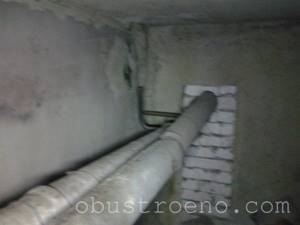
Having reached the location of the apartments at our entrance, I see two - supply and return. To the touch, both pipes differ quite noticeably, so it was not difficult to determine that the colder one was the return pipe.
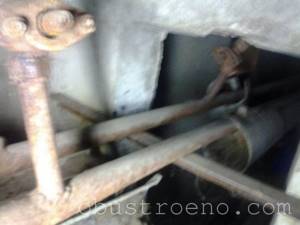
I use my hands again - both risers are cold, although literally a meter before this section the temperature was more than comfortable. The reason is the airing of the system on the upper fifth floor, which is why the coolant does not circulate.
I leave the basement and go to get acquainted with the neighbors on the upper floor, simultaneously inquiring from other residents about the presence of shut-off valves and their condition. As you would expect, they all have cast iron radiators installed 30 years ago.

In Khrushchev-era houses there is no technical floor, so the coolant is supplied from below from the basement. To clarify the operation of the heating system, I propose to consider the diagram presented below.
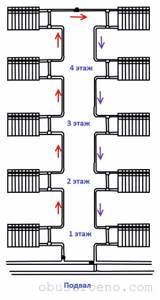
We return to the fifth floor apartment. In two rooms of a family of pensioners, cast iron radiators with 12 and 7 sections were installed. They were the ones who had to be ventilated.
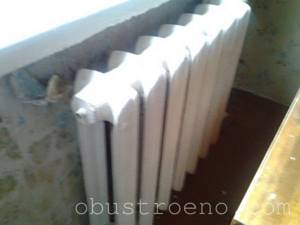
The only way available for this is using a nipple (a prototype of the Mayevsky tap) embedded in the radiator plug.
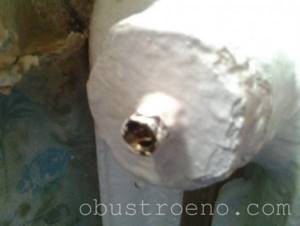
Armed with tools:
- Old galvanized bucket 12 liters;
- Pliers;
- Two flat blade screwdrivers;
- Several floor rags - splashes will be inevitable.
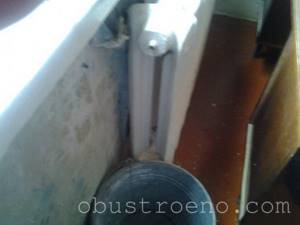
Since a lot of splashes are expected, I provide a place to work around the radiator - I clean and move the furniture further away
Then I take a screwdriver and carefully, so as not to lick the edges, unscrew the screw counterclockwise

- The old system did not work on the first try, I had to use pliers - with their help I turned the screwdriver until the screw came off the stuck place;
- The hiss of air marked the beginning of the air lock coming out. Within 3-4 minutes, the air left the radiator, after which cold water flowed in a thin stream;
- Having adjusted the screw so that the water poured into the bucket, I gave it time - in about half an hour, when the bucket was half filled, the temperature of the water changed from ice to warm, after which I screwed the screw back.
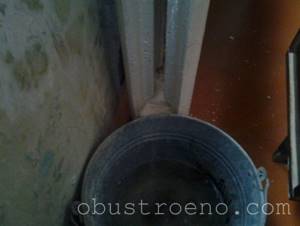
I did the same operation with a cast iron battery in another room. A few hours later, the apartments became noticeably warmer - the thermometer showed an increase of a couple of degrees. Of course, there is no need to talk about a complete solution to the problem of cold in the apartment, because... The coolant temperature is far from 75C, but it’s not yet a bitter winter outside.
Working with structures
If the appeal does not help, you should find out who blocked the riser with representatives of the Housing Office. To do this, you need to contact the Housing Office, the structure will allocate a working team of several people - you cannot do the rounds yourself.
The response of the Housing Office must be demonstrated within one work shift if the application was made on a working day. During the shift, workers will go around the apartments of the building to check the supply of coolant in the heating network.
If all neighbors allowed workers to check, identifying the violator will not be difficult. First, it is enough to ask to resume the supply and start the riser in the presence of housing office workers.
If requests do not help or one of the owners does not allow workers, the identification of the culprit continues based on information from possible witnesses and the territory in which the supply is blocked.
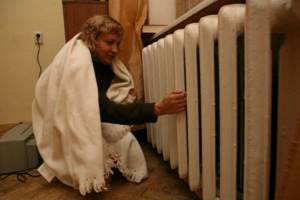
In case of prolonged violation, a statement is filed against the culprit in court stating that he is violating the rules of use and the rights of residents to common property. Before submitting an application, it is advisable to call employees of the housing office or management company to fully check the heating system in the house and provide a written report on its serviceability.
In other words, the plaintiff must have all the documents confirming that the heat supply stopped precisely because of the illegal shutdown.
If the trial is successful and the culprit fails to comply with all the requirements of the court decision, the neighbor may be held criminally liable in accordance with Article 315 of the Criminal Code of the Russian Federation “On failure to comply with a court verdict, court decision or other judicial act.”
Bottom line
I hope that my experience will be useful to some of you. If the symptoms are similar, negotiate with the neighbors on the top floor and ventilate the riser before the onset of winter. Good luck, comrades!
If you want to express gratitude, add a clarification or objection, or ask the author something, add a comment or say thank you!
1. 2. 3. 4. 5. 6.
This article will discuss options for various manipulations with the heating riser. Issues of turning off and starting the riser, options for connecting and routing pipes and features of repairs, as well as a diagram of the heating riser will be covered.
Rules for connecting radiators to the riser
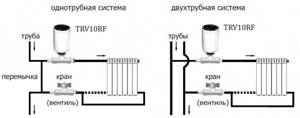
Replacing a riser is most often associated with a general modernization of the heating system. At the same time, not only new pipes are installed, but also radiators and batteries. It is important to choose the right scheme for connecting them to the heat supply system.
First, you need to equip the radiator so that it can effectively perform its functions. Its harness should include the following components:
- Shut-off valves . With its help, you can completely limit the flow of coolant into the battery for its repair or replacement;
- Thermostat . Necessary to reduce heat flow in order to reduce surface temperature;
- Mayevsky crane . Device for removing air pockets.
In addition to possible thermal insulation of heating risers, the layout of the supply lines is taken into account. For a one-pipe system, a bypass must be installed. This is a piece of pipe connecting the inlet and outlet pipes of the radiator. The diameter of the bypass should be one size smaller than that of the heating riser. In this case, the occurrence of a low pressure zone in the system can be avoided.
Experts recommend using identical pipes to connect the drain to the battery. This is necessary to normalize the operating parameters of the entire system, and will also significantly facilitate the complexity of installation. As an additional measure, pressure and temperature sensors can be installed. In this way, you can control the quality of the heating service.
To prevent premature battery clogging, it is recommended to install a strainer. It is mounted on the supply pipe in front of the thermostat.








